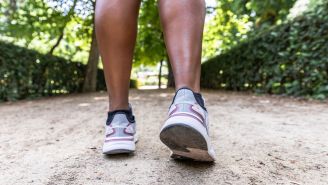Updated on February 16, 2023.
Your healthcare provider (HCP) may have coached you on the importance of a healthy diet to manage your cholesterol. But physical activity is another important piece of the puzzle. About 28 percent of Americans have slightly elevated cholesterol levels, and lifestyle changes can and should be used to treat high cholesterol as the first line of defense, according to the American Heart Association (AHA).
Regularly working out can enhance your cholesterol numbers in three main ways:
- Boosts beneficial cholesterol. Swimming, cycling, walking, or other types of aerobic exercise—the kind that raises your heart rate—elevates your levels of high-density lipoprotein (aka HDL, or “good” cholesterol).
- Knocks down triglycerides. Moderate-intensity exercise can help bring down levels of these fatty substances.
- Trims bad cholesterol. Aerobic workouts combined with resistance training, diet tweaks, and weight loss may help keep harmful low-density lipoprotein (aka LDL, or “bad” cholesterol) in check.
How exactly does exercise work to affect cholesterol levels? According to some research, it’s a complex process at the cellular level that experts don’t fully understand yet. But in general, during exercise, it’s thought that muscles, certain genes, and your liver work more efficiently to process triglycerides and boost HDL.
On the other hand, the AHA says that lack of exercise or a generally sedentary lifestyle lowers your HDL or “good” cholesterol, which means that there is less HDL to remove the LDL or “bad” cholesterol.
Obesity and type 2 diabetes are also associated with higher LDL and triglycerides, and lower HDL. Physical activity is one component of maintaining a healthy weight and preventing diabetes, and therefore preventing elevated cholesterol levels.
For these reasons and many more, the federal government’s Physical Activity Guidelines for Americans calls for at least 150 minutes of moderate-intensity exercise or 75 minutes of vigorous exercise weekly, plus at least two days of muscle strength-training activities. Activities like brisk walking, bicycling, water aerobics, and doubles tennis are examples of moderate-level activities. Jogging, swimming several laps, riding a bike up hills, or playing basketball are considered to be vigorous activities.
Check with an HCP before starting a new exercise program. And remember: Though working out may seem daunting at first, with a few smart strategies and an open mind, you might be surprised at the effect it has on your cholesterol numbers.







